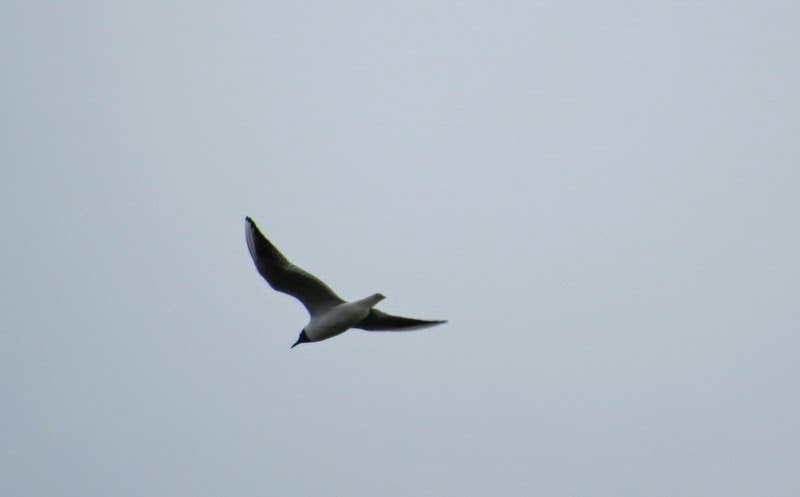A beautiful sunny morning with a light westerly breeze. Perfect for ballooning unfortunately.
 |
| What goes up must come down |
An event was taking place towards Studley, and most drifted off to the south-east. There's always one though, and this chap drifted north-east, then lost height, flushed everything from the flashes, then got the basket tangled in a tree (per Dave, who witnessed the spectacle from near the church) before finally getting away.
Once they'd all cleared out, the birding got interesting.
Swallows were heading north and west all morning in dribs and drabs, no more than a fifteen in total, but they lifted my spirits. Then, to my surprise, I heard the unmistakable dry rattle of a singing
Lesser Whitethroat. Dave joined me and we went to investigate, eventually seeing it before it flew off across the hedgerows. We later bumped into the same bird about 200 metres away, before relocating it at the original spot where I managed to get some shots of it.
 |
| 67. Lesser Whitethroat |
 |
| Lesser Whitethroat singing strongly |
I am not that good at remembering my earliest dates for summer migrants, but I think this is my earliest ever.
Meanwhile, at Netherstead Farm, the first two
House Martins of the year appeared. We made our way past the pool, a Common Snipe flew from the marsh, and reached the flashes, where things looked distinctly quiet. The Teal numbered just seven, and the Green-winged Teal had gone. There were a couple more Snipe on view, plus a Little Ringed Plover, a Green Sandpiper, and a Little Owl.
The field behind us had been roughly ploughed since Wednesday. It looked good for Wheatear, but initially we could only see Linnets and Skylarks. Then Dave spotted a male
Wheatear.
 |
| 68. Wheatear |
Around the same time I got onto a
Sand Martin as it flew west over the flashes, a second followed a few minutes later. This was more like it.
With the sun still shining brightly, butterflies were also trying to grab our attention. This Peacock was starting to look a little tatty.
 |
| Peacock |
But we also saw a some of newly hatched spring insects; a Green-veined White, and several male Orange Tips. We were not done with birds either, as a Siskin flew over, and at least two Blackcaps were out-singing the two or three Chiffchaffs in Stapenhill Wood.
 |
| Orange Tip |
Back at the cars, having just photographed the Lesser Whitethroat, we decided to drive to the church and walk back down to the Flashes. This produced our final year-tick reward in the form of a singing
Willow Warbler, although we couldn't see it. Then, another Lesser Whitethroat started singing, and closer scrutiny of the field produced a total of five male Wheatears.
Spring really has arrived.



































